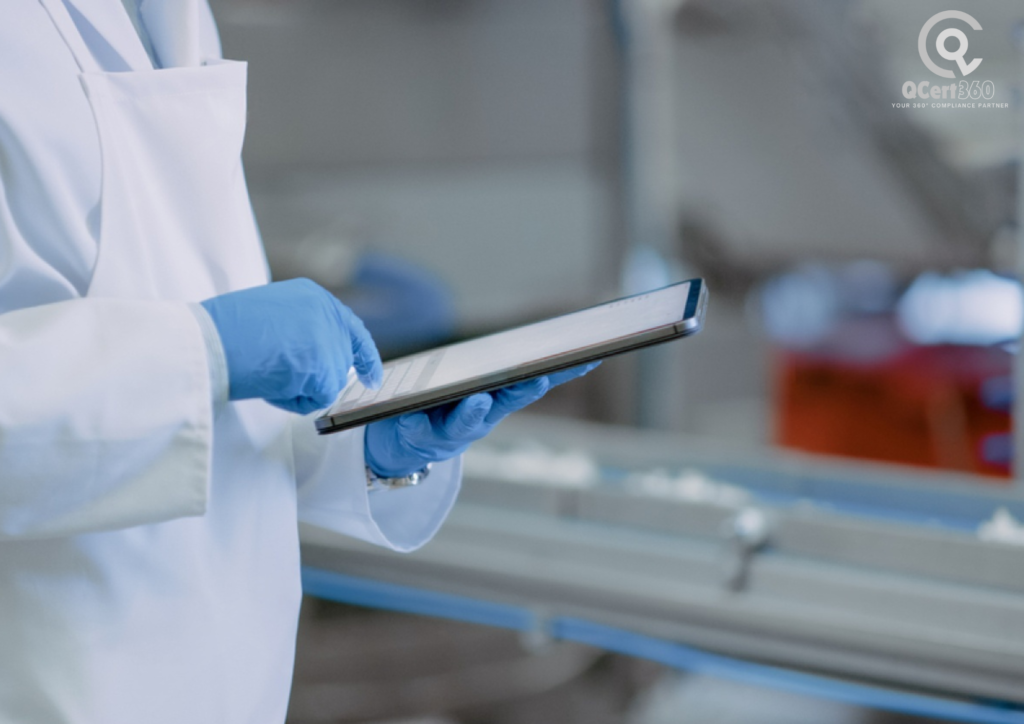
Let’s talk about what happened with baby formula in 2022—and why it should still be on every food company’s radar.
When shelves across the U.S. started running out of infant formula, it wasn’t just a supply chain hiccup. It was the fallout from a serious food safety breach inside one of the biggest players in the industry: Abbott Laboratories.
Parents were panicking. The government scrambled to respond. Abbott’s plant was shut down. And underneath all of that was a single hard truth—a failure in basic food safety controls.
This wasn’t an isolated incident, either. Nestlé, Danone, and other major brands have all had to pull products off shelves for contamination or mislabeling over the years.
So here’s the thing: HACCP and ISO 22000 aren’t just “good-to-have” certifications anymore. They’re survival tools.
What Actually Happened at Abbott?
In February 2022, Abbott had to recall multiple batches of powdered infant formula after several babies got sick—and some died—from rare but dangerous bacteria like Cronobacter sakazakii. That triggered a full-scale FDA investigation.
What they found at the company’s Sturgis, Michigan plant was unsettling:
- Standing water near production lines
- Worn-down equipment
- Inadequate cleaning procedures
- Positive test results for Cronobacter in the environment
And all of this was happening inside a facility that made food for infants—the most vulnerable population you can serve.
Abbott had to shut down the plant, and it stayed offline for months. The damage? Millions in losses, multiple lawsuits, and a giant trust deficit with the public.
This wasn’t just a quality issue. This was a full-blown systems failure—and a failure to properly implement the kind of controls HACCP is built for.
Nestlé’s No Stranger to Food Safety Woes
Take Nestlé, for example. In India, the company had a major crisis in 2015 when regulators found lead in Maggi noodles, one of their best-selling products. The brand was temporarily banned, millions of packets were destroyed, and consumer confidence tanked.
In Europe and North America, Nestlé has faced recalls for baby food products due to undeclared allergens, glass fragments, and microbial contamination. These issues aren’t about bad luck—they’re about gaps in how hazards are identified, controlled, and verified.
Even companies with deep pockets and long histories in food production can fall short if food safety isn’t baked into every single process.
So, What Exactly Is HACCP?
HACCP stands for Hazard Analysis and Critical Control Points. It’s not a buzzword—it’s a practical system used by food businesses around the world to prevent contamination, rather than react to it.
Here’s the core idea:
- Figure out where the risks are in your food production process.
- Identify which points are most critical to control.
- Set clear safety limits at those points.
- Monitor them.
- If something goes wrong, take immediate corrective action.
- Verify the whole system works—and keep records that prove it.
It’s a proactive approach that puts safety at the center of operations, not just something you deal with when inspectors show up.
Where ISO 22000 Fits Into All This
If HACCP is the foundation, ISO 22000 is the full house. It takes those hazard controls and plugs them into a complete food safety management system—one that integrates quality, risk, leadership, traceability, and continuous improvement.
For businesses that deal with:
- Large-scale production
- Multiple suppliers or co-manufacturers
- Export markets or regulatory audits
ISO 22000 offers a structure that scales. It also aligns with other ISO standards like ISO 9001, making it easier to build a cohesive compliance and quality ecosystem across departments.
Why This Matters Now More Than Ever
Food safety isn’t just about passing an audit or ticking boxes on a checklist. It’s about keeping people safe—and keeping your business out of the headlines.
Today, one contamination issue can go viral within hours. News spreads fast, regulators crack down hard, and customers don’t forget.
What used to be a contained recall can now destroy years of brand reputation overnight.
And it’s not just multinationals at risk. If you’re a mid-sized food producer or even a growing startup, a safety incident can knock you out completely. You may not get a second chance.
Are You Reactive or Proactive?
Too many companies wait until something goes wrong to take food safety seriously. That’s like installing a smoke alarm after your kitchen burns down.
HACCP and ISO 22000 push businesses to think ahead. To ask better questions. To train better people. To document and verify—not just assume.
And when the system is working well, your team knows what to watch for, how to react fast, and how to prevent repeat issues.
Bottom Line
What happened at Abbott wasn’t just one company’s mistake—it was a warning to the entire food industry. A reminder that if food safety systems aren’t tight, things can fall apart quickly and publicly.
So if you’re still wondering whether HACCP or ISO 22000 are worth the investment, ask yourself this:
How much would it cost you if a single recall shut down your operations or took your product off the market?
In today’s food industry, being proactive about safety isn’t just smart. It’s essential.
If you want a full walkthrough of what HACCP or ISO 22000 would look like for your facility—or how to get compliant quickly without getting buried in red tape—reach out. This is one of those areas where “we’ll deal with it later” just doesn’t cut it.
FAQ's
1. What is HACCP?
HACCP stands for Hazard Analysis and Critical Control Points. It is a systematic, science-based approach to food safety that identifies, evaluates, and controls biological, chemical, and physical hazards throughout the food production process—from raw material handling to manufacturing and distribution.
2. How does HACCP prevent food safety scandals?
By focusing on prevention rather than end-product testing, HACCP identifies potential hazards at every stage of production and implements controls to eliminate or reduce risks to an acceptable level.
3. What are the seven principles of HACCP?
The seven principles are:
Conduct a hazard analysis.
Determine critical control points (CCPs).
Establish critical limits for each CCP.
Establish monitoring procedures.
Establish corrective actions.
Establish verification procedures.
Establish record-keeping and documentation procedures.
4. Why is HACCP considered the gold standard in food safety?
HACCP remains one of the most recognized and respected systems worldwide. Despite newer food safety standards, it continues to serve as the foundation of modern food safety management systems.
5. How does HACCP contribute to consumer trust?
By proactively identifying and controlling potential hazards, HACCP helps ensure the safety and quality of food products, building consumer confidence and trust in the brand.
6. Is HACCP applicable to all food businesses?
Yes, HACCP applies across the entire food chain—from farm to fork—including manufacturing, catering, retail, distribution, packaging, and storage.
7. What are the consequences of not implementing HACCP?
Failure to implement HACCP can lead to foodborne illnesses, legal liabilities, damaged brand reputation, and loss of consumer trust, all severely impacting business operations.
8. How can HACCP be integrated with other food safety standards?
HACCP can be integrated with other food safety management systems, such as ISO 22000, to create a comprehensive approach addressing both food safety and quality management.
9. What role does staff training play in HACCP implementation?
Proper training ensures employees understand their roles in maintaining food safety, effectively apply HACCP principles, and respond appropriately to hazards, enhancing system effectiveness.
10. How can QCert360 assist with HACCP certification?
QCert360 provides expert guidance in implementing HACCP, conducting internal audits, and preparing for certification to help your business achieve and maintain food safety compliance efficiently.


